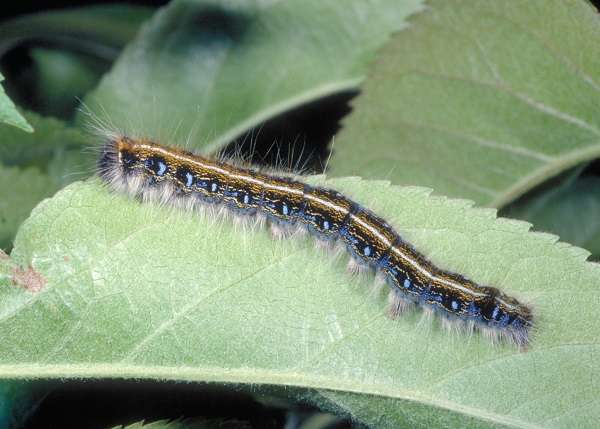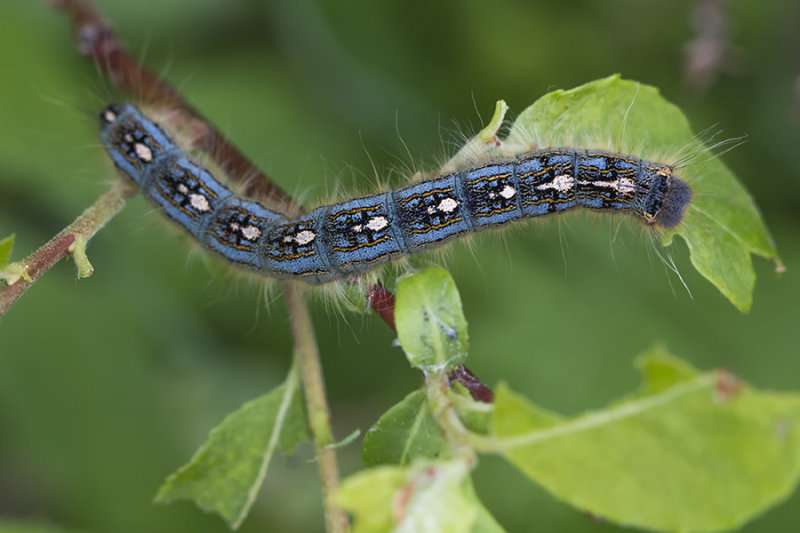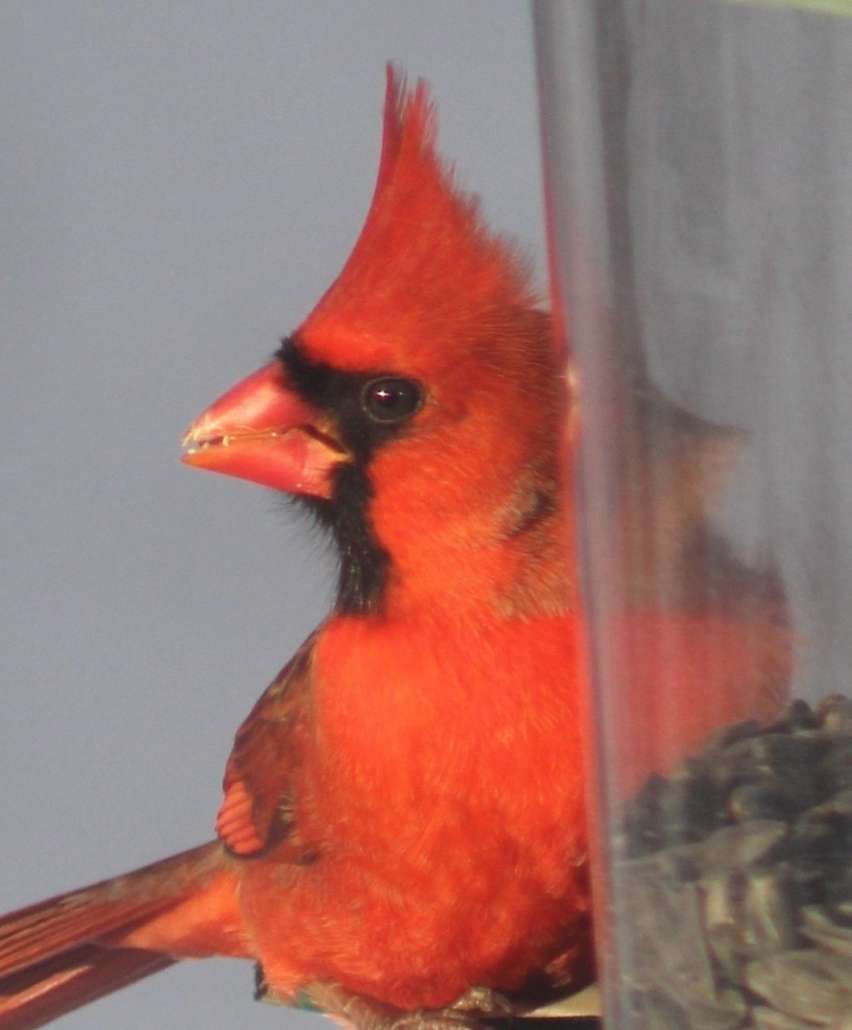PLATTER PERSPECTIVE: Smith Ballew & Ava Gardner
/0 Comments/in Platter Perspective/by Peter Cates by Peter Cates
by Peter Cates
Smith Ballew
Native Texan Smith Ballew (1902-1984) had a dance orchestra with which he recorded batches of 78s back during the 1930s. One was a 1935 ten inch shellac (Conqueror 8441) containing a very expressive performance of a Great American Songbook standard, Isle of Capri, in which he also sang as lead vocalist.
Smith Ballew acted in several 1930s westerns and his singing voice was dubbed in for that of John Wayne in 1934’s The Man From Utah.
One very noticeable quality of Ballew’s orchestra was the alert clarity and richness of the woodwinds. This was characteristic of several dance bands during the ‘20s and ‘30s, particularly those of Jean Goldkette, Paul Whiteman, Fred Waring, Richard Himber, Ray Noble, George Olsen etc., an especially rich period for such orchestras ; unfortunately, collectors of these old breakable records are not as common as those of African-American blues and jazz performers and these shellacs are often quite easy to find at junk shops and flea markets.
Interestingly several years ago, a mail order auction site mentioned having come into possession of a collection of some 150,000 78s of both American and British dance orchestras as part of the estate of a wealthy San Francisco lawyer. From what I have heard, many of those records are still awaiting bids.
The above-mentioned Conqueror disc’s side two had the dance orchestra of Sicilian born Vincent Rose (1880-1944) performing a decent rendition of Shirley Temple’s megahit On the Good Ship Lollipop with singer Dorothy Brent; the only information I can find on her is that she was featured on radio during the early 1930s and there is a 1932 photograph. In addition her voice sounded like that of a little girl Shirley Temple’s age.
Rose himself was an accomplished songwriter and his creations include Avalon, Linger Awhile and Blueberry Hill, which Fats Domino recorded in 1956 and which sold several million copies.
Conqueror was a mail order record label owned by Sears, Roebuck. My Uncle Ben Cates told me of ordering the label’s 78 of Gene Autry’s Silver Haired Daddy of Mine for 75 cents when he was in sixth grade.
Ava Gardner
Actress Ava Gardner (1922-1990) came from a very poor family of tobacco sharecroppers in North Carolina. Through a set of circumstances too long to go into, a photograph of her snapped by her brother-in-law came to the attention of an MGM talent scout who arranged for her to be filmed walking back and forth and arranging flowers in a vase.
When studio boss Louis B. Mayer saw the results, he commented, “She can’t act, she can’t sing, she can’t talk, she’s terrific.” Gardner immediately got a contract and coaching in acting, singing and speaking. After years of bit parts, she achieved fame as a femme fatale in the 1946 suspense thriller The Killers with Burt Lancaster, based on an Ernest Hemingway short story.
I remember her most vividly in 1952’s The Snows of Kilimanjaro with Gregory Peck and based on another Hemingway short story.
I have an MGM ten inch 78 of Gardner singing Bill, and Can’t Help Loving That Man of Mine from her appearance in the Studio’s 1951 musical Showboat, and with exquisitely winsome beauty. She also starred in Mogambo with Clark Gable and which was directed by Portland, Maine, native John Ford, whom she referred to as “The most evil man on earth. I adore him.”
I have been recently listening to Wolfgang Amadeus Mozart’s 14th String Quartet which was beautifully played on a 1930s Columbia Masterworks 78 set by the Roth Quartet. That set and another one from the early 1930s by the Wendling Quartet can be heard via YouTube and are highly recommended listening experiences.
FOR YOUR HEALTH: Tips for Improving Mental Health
/0 Comments/in For Your Health/by Website Editor (NAPSI)—When it comes to mental health, many people across the U.S. have experienced their share of challenges–but help may be at hand.
(NAPSI)—When it comes to mental health, many people across the U.S. have experienced their share of challenges–but help may be at hand.
The Problem
The issue is especially concerning in rural America, where more than 60 percent of people report having a mental health condition – such as anxiety or depression – yet less than half of them get the help or treatment they need. Rural Americans face unique mental health stressors and barriers to accessing care, but those living in rural communities also boast unique support mechanisms that they can tap into to flip the script on mental health stigma.
An Answer
An example of those unique support mechanisms can be found in rural Georgia, where community leader Adaris Rivera has found hope in the resilience that living in a rural community presents. “Each person’s journey with mental health is deeply personal and unique, yet there’s a universal truth that support and hope are within reach for everyone. No one should feel isolated in their struggles,” she said. This is what inspired her to share her own story as part of a national public service advertisement (PSA) campaign called “Love, Your Mind” from Huntsman Mental Health Institute and the Ad Council.
Rivera experienced hardship while growing up in Puerto Rico, moving to the Midwest and eventually laying down roots in rural Georgia. In the PSA video, she talks about her story, saying “I’ve been through a lot” including trauma, anxiety and depression. For Rivera, the goal of sharing her story is to help others who may be going through the same thing. She advocates for people to seek professional help when needed, and shares how daily practices can also be helpful—such as spending time in nature, journaling and finding time for prayer or reflection.
On her mental health journey, Rivera found solace in one unique benefit of living in a rural place: easy access to nature. “When I come home exhausted, there’s nothing more rejuvenating than stepping into my backyard. Cooking with the door open, letting the breeze in and stealing a few moments on my deck to listen to a mental health podcast.”
Another benefit of rural living that has supported her healing: having a close-knit community. When it comes to mental health, one key step is finding people with whom you can talk openly. Rivera is a strong supporter of this idea, saying “Accepting help means that we are allowing somebody to bless our lives.”
She has also found ways to share that hope with her community. She organizes group activities to create “mental health boxes” for individuals who are struggling or being seen for inpatient mental health care. The boxes contain such things as reminders of family and loved ones, items to help with daily self-care and positive messages and quotes.
Expert Opinion
The notion of leaning into your community for support is one that’s also backed by experts. Dave Eldredge from Huntsman Mental Health Institute says, “The reality is, we all have mental health—just like we all have physical health. And when we take care of our minds, we can show up stronger in our work and for the people we care about.”
Eldredge grew up in both rural Utah and rural Idaho and knows that talking about mental health in rural communities can feel difficult at first. “A big part of the challenge can be our mindset. We pride ourselves on being self-reliant, and that can be a wonderful thing. But when we open up to others for a helping hand or just a listening ear, we can actually be stronger.”
MY POINT OF VIEW: The origin and history of Memorial Day
/0 Comments/in Holidays, My Point of View/by Gary Kennedy
A close-up view of a tombstone at the Arlington National Cemetery, marking the grave site of four unknown crewmen assigned to the battleship USS MAINE (BB 2). The Marine sank after exploding off the coast of Havana, Cuba, killing approximately 260 crewmen. The sabotaging of the main precipatated the American declaration of war against Spain in 1898.
 by Gary Kennedy
by Gary Kennedy
Originally this date in time was named Decoration Day. A day of remembrance of those who died in service to our country. It was originally commemorated on May 30, 1868. It was to show our respect to those who gave their lives in the Civil War. This proclamation was given by General John A. Logan, of the Grand Army of this Republic, an organization of Union sailors and soldiers at Arlington National Cemetery, in Washington, DC.
During the first national event former Union General and sitting Ohio Congressman James Garfield was the primary speaker. There were 5,000 volunteers that opted to help decorate the final resting places of more than 20,000 Union and Confederate soldiers. It was here that the recognition of the fallen was realized and addressed. Other observances followed suit, however, the events held by the freed slaves was for the Union troops for obvious reasons. These were held in and around Charleston, South Carolina, for the most part.
New York was the first state to make this a legal holiday and at this point in time the holiday was addressed as Memorial Day. This all occurred in 1873. By the late 1800s many states had adopted this holiday and made it a state holiday after World War I. The holiday was considered a holiday for all who fell in battle while serving their country. Eventually, in 1971, Congress passed the Uniform Monday Act which designated Memorial Day would be celebrated on the last Monday of May. That has held to this very day.
Many people, over time, have questioned what they consider the similarity between Memorial Day and Veterans Day. However, similar, they are very different. The intention of the Memorial Day holiday was/is to honor all service personnel who died during armed conflict. The Veterans Day holiday is to honor all veterans who have served our country with honor dead or alive.
In December 2000 the US Congress passed and signed into law, “The National Moment of Remembrance Act”. (P.L. 106-599), creating the thought of the people of the USA, the National Moment of Remembrance. This moment begins at 1:11 p.m., eastern time thus progressing one hour for each time zone. The thought here is for total silence for two minutes in remembrance and thanks. In 1971 Memorial Day was declared a national holiday by an act of Congress. At this time it was officially placed in the last Monday in May for observance.
This is the time we see thousands of flags and beautiful flowers. For many this is a sad time, a time to mourn. For those who have lost no one it’s a time for respect and thankfulness for their sacrifice. It was also at this time that Colonel John McCrae wrote the beautiful poem, In Flanders Fields, which led to the Poppies of that battle field to become the holiday’s treasured flower. I won’t write that poem here as you can pull it up on your computer. Moina Michael, a YMCA worker, inspired wearing the poppy by adorning one and giving many others away.
There are several “Do’s and Don’ts” relating to Memorial Day that I should mention. 1) Don’t say “Happy Memorial Day”, you can express your gratitude to all men and women who have served and we are proud to honor them. 2) Don’t thank current troops; you should avoid saying, “Thank you for your service”. 3) Don’t let politics keep you from rendering respect; we have been defended for more than two centuries. 4) Don’t let business greed be part of who you are on this day. Memorial Day is prideful but on its face not a happy occasion. You can wear a memorial button from May 1 until Memorial Day. The not wearing of white was a southern thing mostly because of the heat. It really doesn’t apply anymore. Just be tasteful to the event you are attending. Like all three-day weekends from work enjoy your family and friends; a prayer for those who gave it all is respectful and appropriate and it should come from your heart. God bless and have a happy and safe weekend. I will talk to veterans next week.
SCORES & OUTDOORS: It’s caterpillar season in Maine
/0 Comments/in Scores & Outdoors/by Roland D. Hallee by Roland D. Hallee
by Roland D. Hallee
Spring has arrived in Maine, and with it, the Maine Forest Service and others have been fielding caterpillar questions. Caterpillars are essential food for many other animals, including insects, birds, mammals, and even fish! However, sometimes caterpillars from our trees and shrubs become nuisances around our homes and workplaces, and outbreak populations can threaten tree health. The caterpillars of forest tent, eastern tent and browntail moths are beginning to make their presence known.
The Maine Department of Agriculture, Conservation and Forestry urges you to take a responsible approach to living with the caterpillars in your developed landscape and avoid causing unnecessary harm to the environment and human health.
Remember that caterpillars play an important role in the environment; what you consider a pest may be someone else’s meal.
Consider no-action as a valid strategy. Sometimes, it is the most reasonable approach, but often, there are small steps you can take to reduce impacts.
If populations are unbearable or threaten a high-value ornamental tree’s health, correctly identify the caterpillar and begin with the least-toxic approach.
It is against the law to apply pesticides in ways that do not comply with label directions. Improper pesticide use can threaten human and environmental health.
The Maine Board of Pesticide Control does not recommend home-remedy pesticides. In some cases, they are illegal.
What follows are some less toxic approaches to managing tent caterpillars.
Eastern Tent Caterpillar
This is a native caterpillar that feeds on fruit trees and shrubs (Rose family species such as cherries, apples, serviceberries, and hawthorns). It can strip ornamental and fruit trees but it is not a significant forest or human health threat in Maine. If you see them in a tree that you don’t want them to remain in throughout their caterpillar season you can:
Remove unhatched egg masses. This only will apply in cooler spots in the coldest areas of the state. We have already seen the start of eastern tent caterpillar hatch all the way to northern Aroostook County this year. Next winter, consider scouting these trees for egg masses so you can remove those prior to hatch.
Strip young colonies of caterpillars from branches within reach using gloved fingers.
Relocate developing nests to a woodland fruit tree like a black cherry or serviceberry. If you remove the twig it is on, sanitize pruning tools before use and between cuts. These caterpillars host some generalist predators and parasitoids that can help reduce other caterpillar populations.
Remove and destroy the nest. You can strip them off using your hands, or, with larger nests, put a forked twig or pole with a nail into the web, twist it, then pull the nest off. Done in the early morning or on a rainy day, you will remove most of the caterpillars that use the nest.
Forest Tent Caterpillar
This is a native caterpillar that has boom and bust population cycles. Parts of Aroostook County have had several years of high populations of this insect, with caterpillars especially abundant on aspen species and also feeding on other hardwood trees and shrubs.
It is important to know that hardwood trees can tolerate a couple of years of severe defoliation before showing long-term health impacts, assuming other stresses, like drought, are not present. As a native species, this caterpillar provides important food for other species, including enemies of other insect pests.
On small, ornamental trees and shrubs, the egg masses can be removed by hand and destroyed. Note that hatch has started in northern Aroostook County and will take place over several days.
Young colonies of caterpillars can be removed from branch tips or squashed while they rest on the main stem, especially in the evening or on cool days.
In larger established landscapes experiencing their first year of defoliation, healthy trees will pull through. If this will be beyond the second year, you expect more than a third of the leaves to be consumed, you may want to consider insecticide treatment. We recommend working with a licensed pesticide applicator to treat established ornamental trees. They may use a foliar application of insecticide or a systemic treatment. If applied early enough in the life cycle, BtK, an active ingredient that has action specifically against caterpillars, can be used. It must be applied to the leaves of trees that young caterpillars are actively feeding on to be effective.
Be aware that the period of wandering caterpillars is short. Sometimes, just waiting them out is the most practical solution. If caterpillars are a nuisance around the home, they can be washed from hard surfaces like decks and siding with a strong stream of water or brushed off with a stiff-bristled broom. Where possible, follow that by removing them using a wet canister shop vac. A shop vac with a couple of inches of water in the canister can also be used to remove caterpillars from hard surfaces within reach. A couple of drops of soap added to the water will break surface tension and allow the water to suffocate the caterpillars. Be aware if you don’t clean them up, they may just climb right back where they were.
Cocoons on siding and other surfaces may be removed by a stiff-bristled broom. Test this approach in a small area first to see if the surface can withstand the treatment.
Browntail Moth
This non-native species is also in an epidemic population stage in parts of Maine. Because the hairs on the caterpillar have human health impacts, if you choose to remove caterpillars, be sure to do so only after taking precautions to prevent exposure. Our website has detailed management tips for browntail moth. You can also subscribe to our browntail moth updates for more details on this insect.
PLATTER PERSPECTIVE – Movie: Hangman
/0 Comments/in Platter Perspective/by Peter Cates by Peter Cates
by Peter Cates
Hangman
Hangman is a 2017 thriller dealing with a serial killer on the loose in the fictitious city of Monroe, Georgia. The psycho also dispatches each of his victims according to a children’s game called Hangman, hence the title.
The movie is also a piece of junk in terms of all the clichés of this genre which need not be gone into.
But I mention the film because of the outstanding performances of a few of the cast members. First Al Pacino portrays the retired police Detective Ray Archer who is spending his days observing the comings and goings on one street corner in an inevitably restless state of mind. Like his longtime pal Robert De Niro, Pacino conveys extraordinary emotion just sitting and observing. And his delivery of lines give pleasure, despite the terrible script.
I first saw Karl Urban in the 2009 CIA comedy thriller Red as a misinformed Agency operative trying his darnedest to kill former agents Bruce Willis, John Malkovich and Morgan Freeman, and his contribution was quite stiff and unimaginative..
Here he portrays Detective Ruiney, who’s a friend and former colleague of Detective Archer. One finds out that Ruiney’s wife was murdered by the serial killer, that Archer had introduced the pair to each other so that Ruiney is now unofficially consulting with Archer on investigative details.
Urban’s characterization of Ruiney is commendable. One sees a man emotionally broken by the loss of his wife and the agonizing frustration of not finding the killer after a lapse of several years. This actor has obviously developed further in his ability to act.
A young actress Brittany Snow, whose name is new to me, gave a galvanizing performance as a Pulitzer Prize-winning investigative journalist Christi Davies, who is allowed under very strict guidelines to ride along with Ruiney on his dangerous rounds. Davies also has her own fears and vulnerabilities from what she has seen previously and Actress Snow conveys them eloquently.
Finally another previously unfamiliar name, Sarah Shahi, delivers a blistering performance as Police Captain Lisa Watson who is confined to a wheelchair because of a drunk driver running her off the road. She conveys authoritative force as the Boss, but also an endearing sympathy when Archer, Ruiney and Davies put themselves in harm’s way tracking the killer as his victims increase.
Again the script is lousy, the pacing stinks, the ending is hokey but these four individuals did give their all to an otherwise hopeless dud.
Steve Lawrence & Eydie Gorme
The late great married and immensely gifted singing couple Steve Lawrence (1935-2024) and Eydie Gorme (1928-2013) recorded a seven-inch 45 (Columbia 4-42815) in 1963 featuring two throwaway novelty songs – Ain’t Love; and I Want to Stay Here, itself by the songwriting team of Gerry Goffin and his ex-wife Carole King; here they transformed these trivial tunes into little gems and were in turn assisted by the very underrated arranger/conductor Marion Evans. I have noticed time and again that his name on any record means quality listening, whatever the previous calibre of the singer.
And both sides are on YouTube.
Jack Warner
According to his 1964 autobiography My First Hundred Years in Hollywood, studio boss Jack Warner (1892-1978) recounts a 1958 automobile accident near the Cannes Film Festival in which he was reported by newspapers as dead. In fact he begins this book with an account of his death instead of with the usual account of a birth opening most memoirs.
Warner also commented sardonically- “I never want to see that deadly place again. They tell me I should.”
FOR YOUR HEALTH: Pickleball, Anyone? Avoid Injuries While Playing This Popular Sport
/0 Comments/in For Your Health/by Website Editor Lately is seems as though you can’t pass a park or court without spotting people engaged in a lively game of pickleball. The fast-moving sport seems to have come out of nowhere and captured the interest of young and old alike, who can’t get enough of it. With all that play there is inevitably the possibly of strain and injuries, caution chiropractors.
Lately is seems as though you can’t pass a park or court without spotting people engaged in a lively game of pickleball. The fast-moving sport seems to have come out of nowhere and captured the interest of young and old alike, who can’t get enough of it. With all that play there is inevitably the possibly of strain and injuries, caution chiropractors.
People who may have been inactive or less active over the past few years should be especially careful when picking up a pickleball paddle and charging into “the kitchen” (the non-volley zone on either side of a pickleball net). “For some, starting to play pickleball has resulted in a rather sudden increase in physical activity, which is one of the risk factors we see for injuries in many other sports,” explains Dr. Michael Braccio, an American Chiropractic Association (ACA) member and pickleball enthusiast.
Even if you are in fairly good shape and exercise regularly, you may not have experience with racquet sports, which can also leave you vulnerable. Elbow, shoulder and wrist injuries are the most common in pickleball, says Dr. Braccio. Injuries in the knees and ankles are common in the lower body. Even low back pain can result from the squats and lateral lunges that are common during “dink rallies” (soft, low shots).
As in sports, when it comes to injuries a good offense is just as important as defense. Dr. Bracco offers a few tips to help keep pickleball players in the kitchen and out of their doctor’s office:
Do warm up. While you may be tempted to just step on the court and play, not allowing your body to properly warm up could increase your injury risk. Aim for a 5- to 10-minute warm-up and include some light cardio movements along with shoulder exercises such as arm circles.
Don’t overdo it. “It’s not uncommon to start playing pickleball multiple days in a row for several hours,” says Dr. Braccio, “which can result in a sudden increase in load, increasing the risk of injuries. So, gradually increasing the amount of load can be a useful strategy, making sure that there are recovery days so that the body can adapt.”
Do strength training exercises. Another way to prevent pickleball injuries is to condition your body so it can better tolerate the increased load. “Strengthening exercises for the rotator cuff, core and knees are all areas that people playing pickleball would benefit from focusing on,” Dr. Braccio says, “initially working on building up general strength in those areas and then working into performing quicker movements similar to the movements in pickleball.”
Don’t forget to protect your eyes. Pickleball Magazine reports that the average pickleball travels baseline to baseline in just one second – half the time it takes a tennis ball to cross the same distance.
Taking these steps can help you continue to play the sport you love without injury, while also enjoying the social benefits. “For myself, not only is pickleball a lot of fun, but the community surrounding it is awesome,” shares Dr. Braccio. “There’s a great social aspect of playing with friends and meeting new people.”
For more on chiropractic, injury prevention tips or to find an ACA member in your area, visit www.handsdownbetter.org.
PLATTER PERSPECTIVE: Hans Schmidt-Isserstedt
/0 Comments/in Platter Perspective/by Peter Cates by Peter Cates
by Peter Cates
Hans Schmidt-Isserstedt
As I am writing this on May 5, I wish to pay tribute to conductor Hans Schmidt-Isserstedt who was born on this day 124 years ago and passed away on May 28, 1973, at the age of 73 .
Some background: he recorded a number of 78s for the Telefunken label during the 1930s, worked during most of the Hitler years, yet avoided Nazi party membership; in 1936, for obvious reasons of safety, he sent his Jewish wife and their two sons to live in England and was separated from them until the end of World War II.
He conducted with a clear beat and an astute sense of the beauty and power in a piece of music, and recorded distinguished Beethoven Symphonies 3, 4, 7 and 9 with the Vienna Philharmonic during the 1960s. The 3rd Symphony, better known as the Eroica, had an especially spellbinding quality in its blend of heroic nobility, pulsating rhythmic pacing and melting lyricism rarely equalled by the many other performances in its recording history.
I also highly recommend a Tchaikovsky 5th Symphony from the early 1950s with the Hamburg Radio Orchestra, a recording which I listened to yesterday.
While on the subject of celebrations in May, I wish to point out that May 6 is the 126th birthday of conductor Jascha Horenstein (1898-1973) while May 14 is the 139th of Otto Klemperer (1885-1973); Schmidt-Isserstedt, Horenstein and Klemperer are three of six conductors who died in 1973, the others being Karel Ancerl, Istvan Kertesz and Paul Kletzki. 1973 was a horrible year for the loss of truly great conductors.
May 7 commemorates the birthdays of composers Johannes Brahms (1833-1897) and Peter Ilyich Tchaikovsky (1840-1893). In 1889, Tchaikovsky was in Hamburg, Germany, for a performance of his 5th Symphony. Brahms attended the rehearsal, initially disliked the piece but then grew to like it.
A piece of Brahms that I listened to over the weekend was the Alto Rhapsody that he composed out of his secret love for Julie Schumann, the daughter of fellow composer and mentor Robert Schumann and his wife Clara (1820-1896), an attraction that caused Brahms much inner sorrow, only intensified when Julie became engaged.
The Rhapsody was scored for either mezzo-soprano or contralto, a men’s chorus and orchestra. Brahms told Clara and Julie to consider it a Bridal Song/wedding gift. The recording I listened to was a 1962 Angel LP featuring mezzo soprano Christa Ludwig with Otto Klemperer conducting the Philharmonia Orchestra and Chorus, and a performance of uniquely spellbinding beauty.
A younger friend of Brahms was conductor Felix Weingartner who recorded the composer’s 4 Symphonies along with Beethoven’s 9 on 78s over a 15-year period from 1925 to 1940. A particular favorite is his interpretation of Beethoven’s 5th which I have played several times since July. Weingartner died at the age of 79, on May 7, 1942.
On May 7, 1747, the 62-year-old composer Johann Sebastian Bach arrived in Potsdam, Germany, at the expressed invitation of Frederick the Great to perform for the Emperor, himself a composer and musician of considerable talent. The visit resulted in two masterpieces from the composer before he died in 1750 – the Musical Offering and the unfinished, sublimely inspired Art of the Fugue.
The above music and performances can be heard via YouTube.
Give Us Your Best Shot! for Thursday, May 2, 2024
/0 Comments/in Give Us Your Best Shot!/by Website EditorTo submit a photo for this section, please visit our contact page or email us at townline@townline.org!

SMILE, YOU’RE ON CAMERA: Tina Richard, of Clinton, recently snapped this gray fox sunning itself on a warm spring day.

OL’ GLORY: Virginia Jones, of Palermo, snapped this American flag against a picturesque background last fall.
REVIEW POTPOURRI: Adolph Hitler; Composer: Otto Klemperer
/0 Comments/in Review Potpourri/by Website Editor by Peter Cates
by Peter Cates
Adolph Hitler
In the interest of getting a few columns ready a few weeks ahead of time, I am writing this one on April 20, the 135th birthday anniversary of one of the two most evil dictators of the 20th century (the other being Joseph Stalin), namely former German chancellor Adolf Hitler (1889-1945).
My earliest exposure to Hitler’s life came via a short paperback, The Rise and Fall of Adolf Hitler, by William L. Shirer (1904-1993) which I bought for 25 cents through the TAB Book Club when I was in sixth grade during the 1962-63 school year. John Kennedy was still president and his father, who was appointed Ambassador to Great Britain in the late 1930s, for some mysterious reasons by FDR, was one of Hitler’s biggest fans, much to the disgust of FDR who eventually fired him, and of son Jack who would quietly leave the room whenever his father was spouting politics.
Shirer’s book was based on the much longer 1961 Rise and Fall of the Third Reich which has sold millions of copies and was a Book of the Month Club selection. Much of the material was based on the author’s years as a journalist in Berlin from 1934 to 1940. More than any other correspondent during those six years, Shirer personally witnessed the triumph of evil in its various manifestations and brought to his writing an immediacy most others lacked.
He authored several other books on these experiences – Berlin Diary, End of a Berlin Diary, The Nightmare Years, Twentieth Century Journey, etc.
In 1934, once Hitler was establishing himself after being “democratically voted in by the people,” Shirer wrote in the Nightmare Years what he was witnessing in Berlin:
“Platoons or companies of brown-shirted storm troopers of the S.A. and black-coated guards of the more elite S.S. were constantly marching through the streets, their jackboots echoing on the pavement. I was warned that anyone on the sidewalk who did not pause to salute their standards and flags was liable to be beaten up on the spot. I soon learned to duck into a shop when they passed.”
In 1940, Shirer received word that the Gestapo was planning to arrest him on trumped up charges of espionage and execute him, and got out in the nick of time.
Most highly recommended is a viewing of 1961’s Judgment at Nuremberg dealing with the trial of four Nazi judges by an American military tribunal and starring Spencer Tracy as the presiding chief justice, Burt Lancester as one of the Nazis and an all star cast that includes Marlene Dietrich, Judy Garland, Montgomery Clift, William Shatner, etc. Spencer Tracy stole the show.
A particularly disturbing aspect of the film was the several Germans who denied knowing about the death camps. And other pertinent historical issues were referenced – the beginnings of the Cold War, the temporary closing of Berlin by the Russians and the Berlin Airlift of 1948 in which food and other necessary supplies were parachuted by American planes.
And finally a haunting scene of Tracy as the Judge walking by himself through the outdoor amphitheater where Hitler had his rallies communicated powerfully.
Otto Klemperer
I have been listening to an eight CD set of the great Otto Klemperer’s 1960s studio recordings of Bach’s B minor Mass and Saint Matthew’s Passion, Handel’s Messiah and the Beethoven Missa Solemnis, each of which is a masterpiece. Klemperer (1885-1973) was already in his 80s and still conducting at a peak level. Warner Classics 9 93540 2.
Klemperer’s son Werner portrayed Colonel Klink on Hogan’s Heroes.
These recordings can be heard via YouTube.
.
Interesting links
Here are some interesting links for you! Enjoy your stay :)Site Map
- Issue for July 3, 2025
- Issue for June 26, 2025
- Issue for June 19, 2025
- Issue for June 12, 2025
- Issue for June 5, 2025
- Issue for May 29, 2025
- Issue for May 22, 2025
- Issue for May 15, 2025
- Issue for May 8, 2025
- Issue for May 1, 2025
- Issue for April 24, 2025
- Issue for April 17, 2025
- Issue for April 10, 2025
- Issue for April 3, 2025
- Issue for March 27, 2025
- Issue for March 20, 2025
- Issue for March 13, 2025
- Issue for March 6, 2025
- Issue for February 27, 2025
- Issue for February 20, 2025
- Issue for February 13, 2025
- Issue for February 6, 2025
- Issue for January 30, 2025
- Issue for January 23, 2025
- Issue for January 16, 2025
- Issue for January 9, 2025
- Issue for January 2, 2025
- Sections
- Our Town’s Services
- Classifieds
- About Us
- Original Columnists
- Community Commentary
- The Best View
- Eric’s Tech Talk
- The Frugal Mainer
- Garden Works
- Give Us Your Best Shot!
- Growing Your Business
- INside the OUTside
- I’m Just Curious
- Maine Memories
- Mary Grow’s community reporting
- Messing About in the Maine Woods
- The Money Minute
- Pages in Time
- Review Potpourri
- Scores & Outdoors
- Small Space Gardening
- Student Writers’ Program
- Solon & Beyond
- Tim’s Tunes
- Veterans Corner
- Donate






















